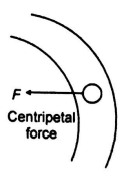Q. A cyclist moving with a speed of $4.9\, m/s$ on a level road can take a sharp circular turn of radius $4\,m$, then coefficient of friction between the cycle tyres and road is:
AFMCAFMC 2002
Solution:
Solution:
